Bag-shelter Moth (Ochrogaster lunifer)Adult Bag-shelter Moth Processionary Caterpillars
One of the amazing sights in nature to witness are the Processionary Caterpillars. Marching in single line formation, head-to-tail, these strange hairy grub-like creatures are the larvae of an insect called the Bag-shelter Moth (Ochrogaster lunifer).
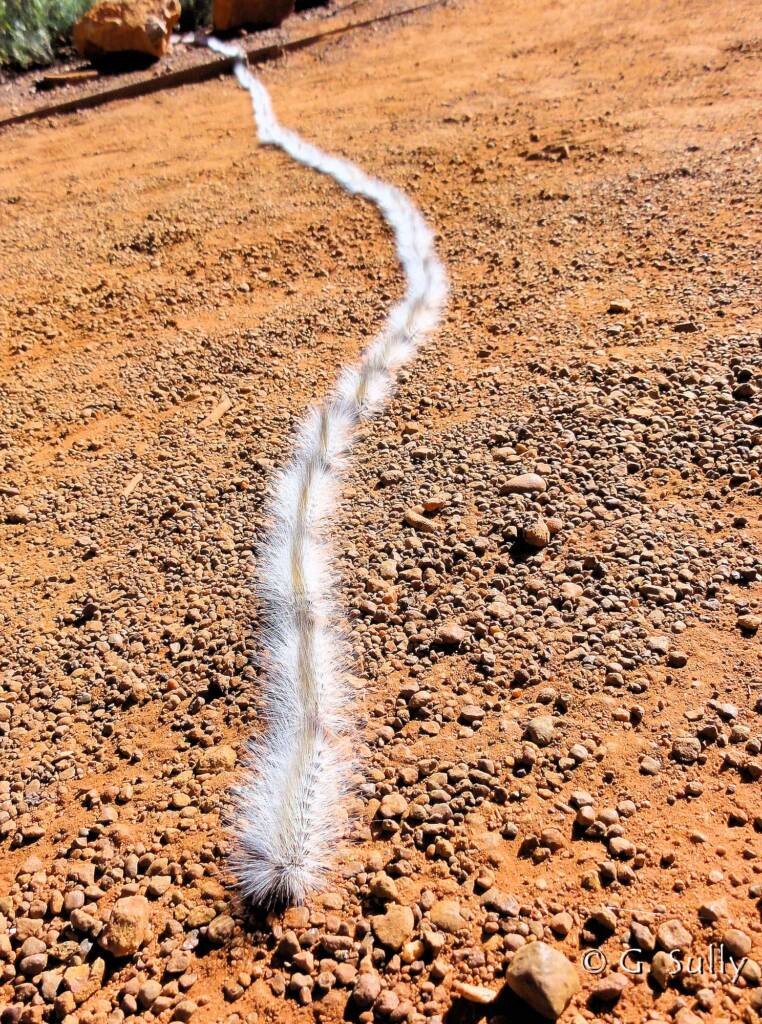
For those in the know, there is a warning that comes with these processionary caterpillars, “DO NOT TOUCH!”
Each caterpillar is covered with hundreds of long fine, needle-like hairs, that are sharp and brittle. The hair shafts are also covered in microscopic bards and will readily penetrate and break off on your skin. The hairs contain an irritating protein that can cause a highly allergic response in most people and can cause blindness if they get into your eyes.
Their other common names include Itchy Grub or Itchy Caterpillars.
There are reports that pregnant horses who accidentally eat these caterpillars when they are on grass, will spontaneously abort their unborn foals.
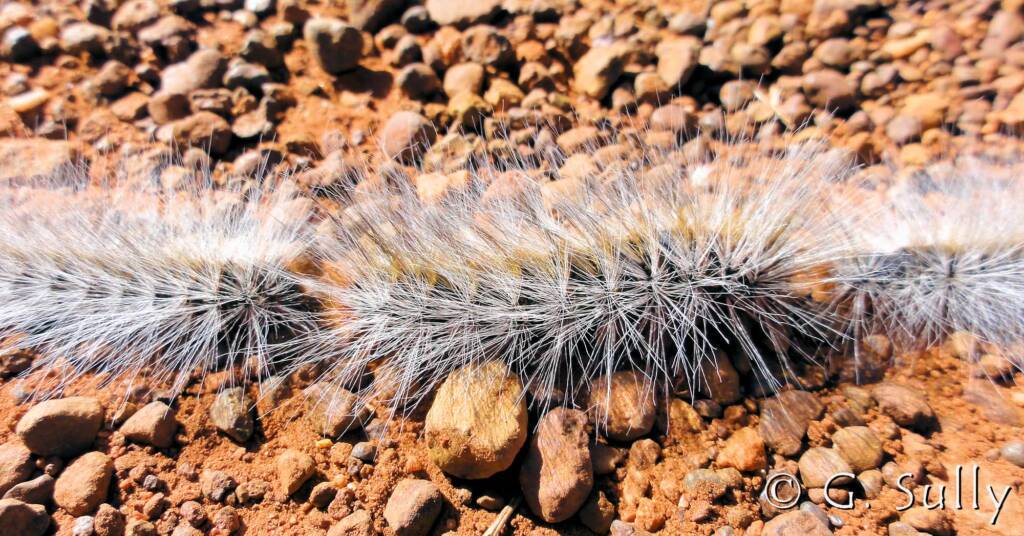
The female Bag-shelter Moth lay their eggs on trees, usually acacias (wattles) and more rarely on eucalypts.
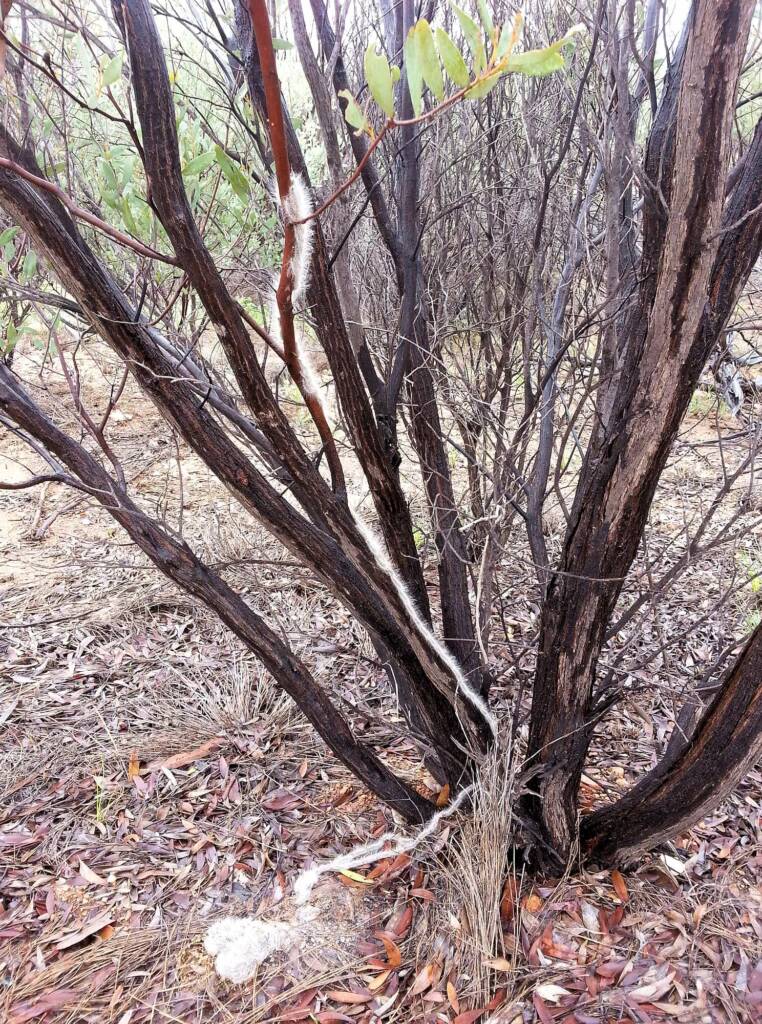
After the adult moth lays the eggs, the eggs and the newly hatched small caterpillars are protected by a substance produced by the female moth. As the caterpillars eat and grow, the nest is protected by the silk produced by the larger caterpillars.
Like the adult moth whose wing marking colours are extremely variable, the larvae of Ochrogaster lunifer can also be variable from orange and brown, to dark brown. The caterpillars can measure between 3 to 4 cm in length.
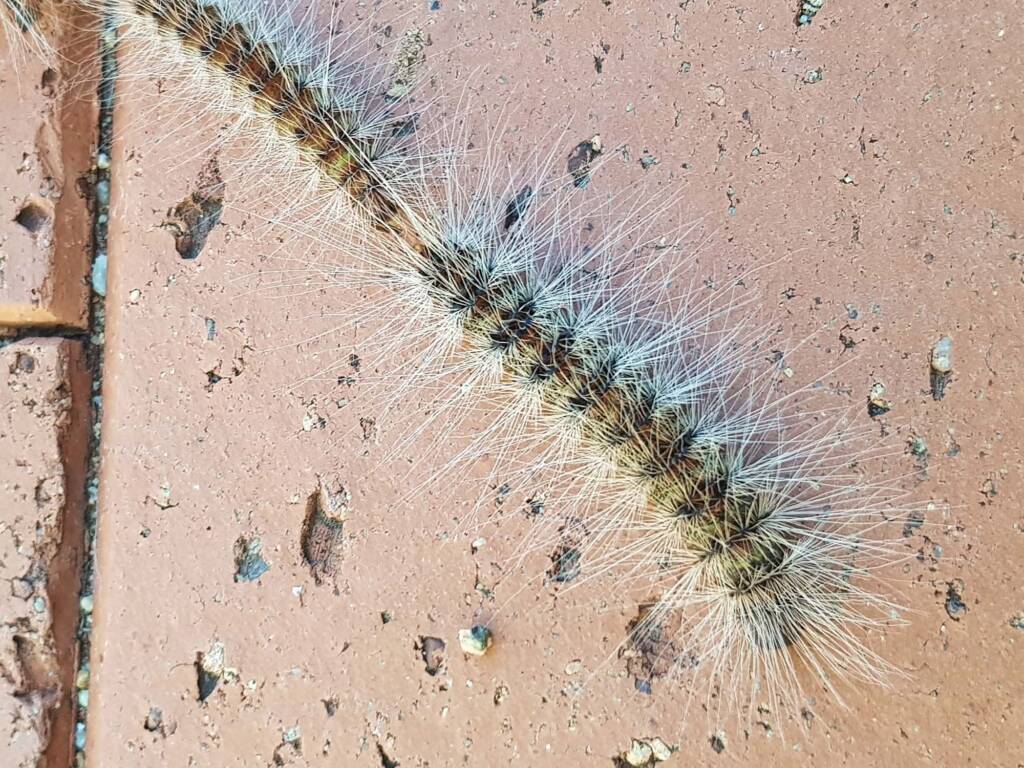
The caterpillars shelter communally in a bag nest made of silk, excrement, shed skins, and other debris. At dusk, they leave the sack to forage at night on the tree where their bag nest is hanging in, returning to the bag nest at dawn.
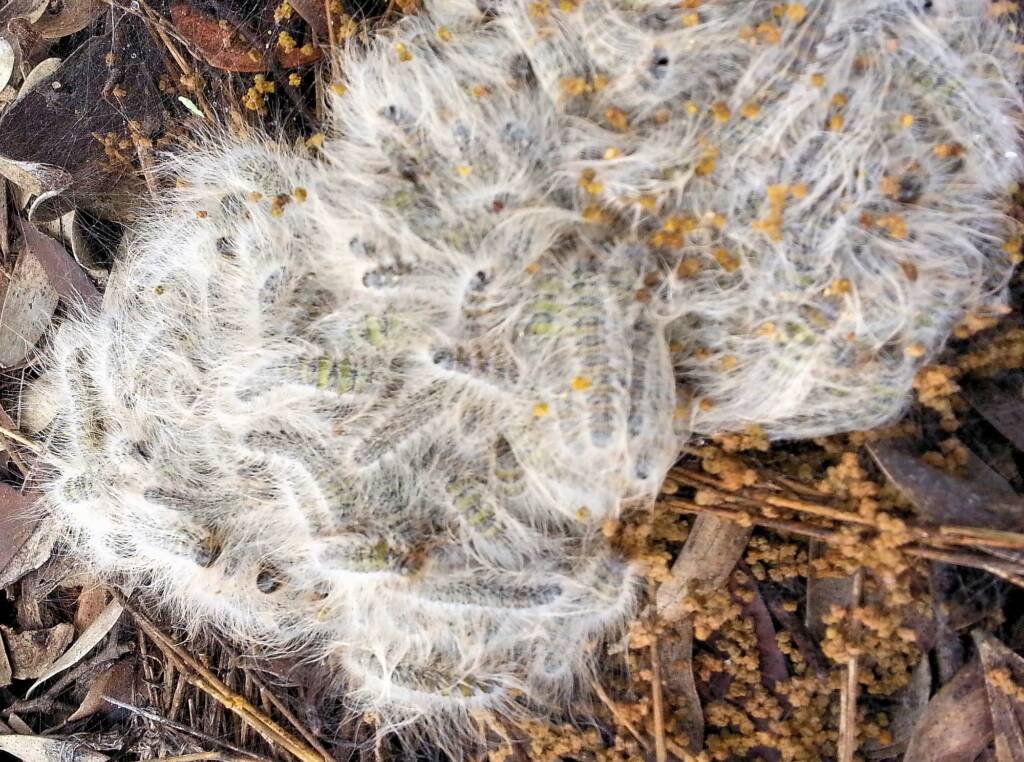
The caterpillars are voracious eaters, and will sometimes defoliate the tree they are nesting in, which mean they then need to find another nearby tree to move to. This is when you usually see them travelling along in a single train, often up to 200 or more individuals.
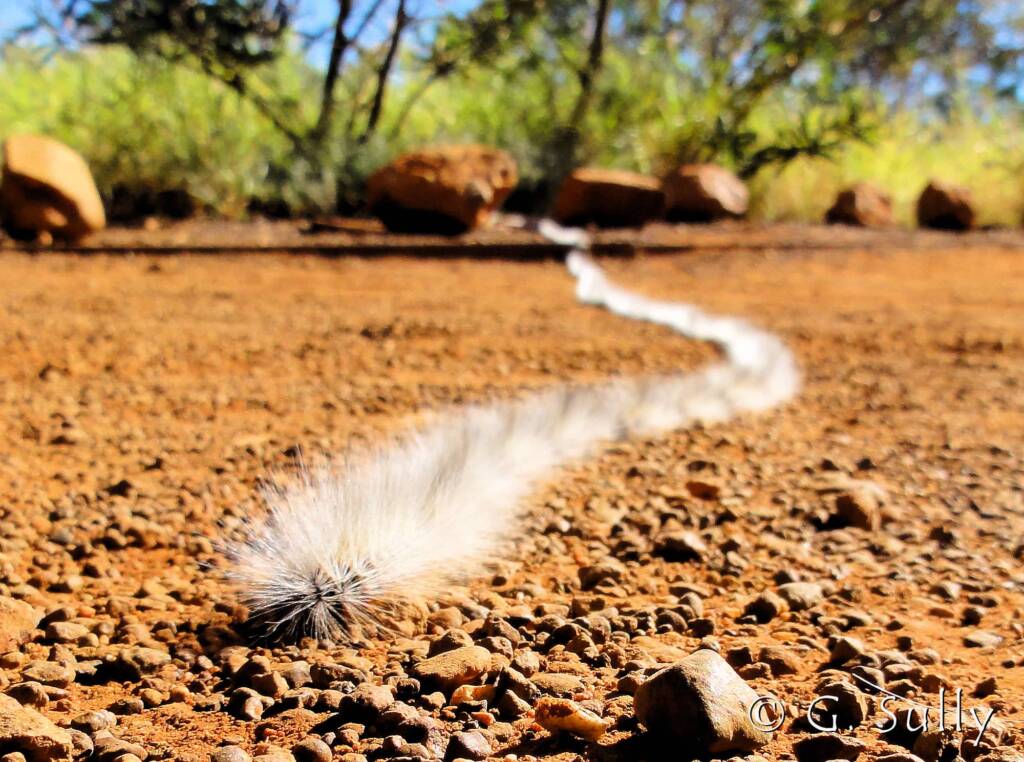
Each caterpillar leaves a trail of silk as they walk, which is followed by the caterpillar behind. This silk trail of the caterpillars following nose to tail form the processions. Multiples silk trails can be found on the infested tree trunk that the caterpillars are feeding on.
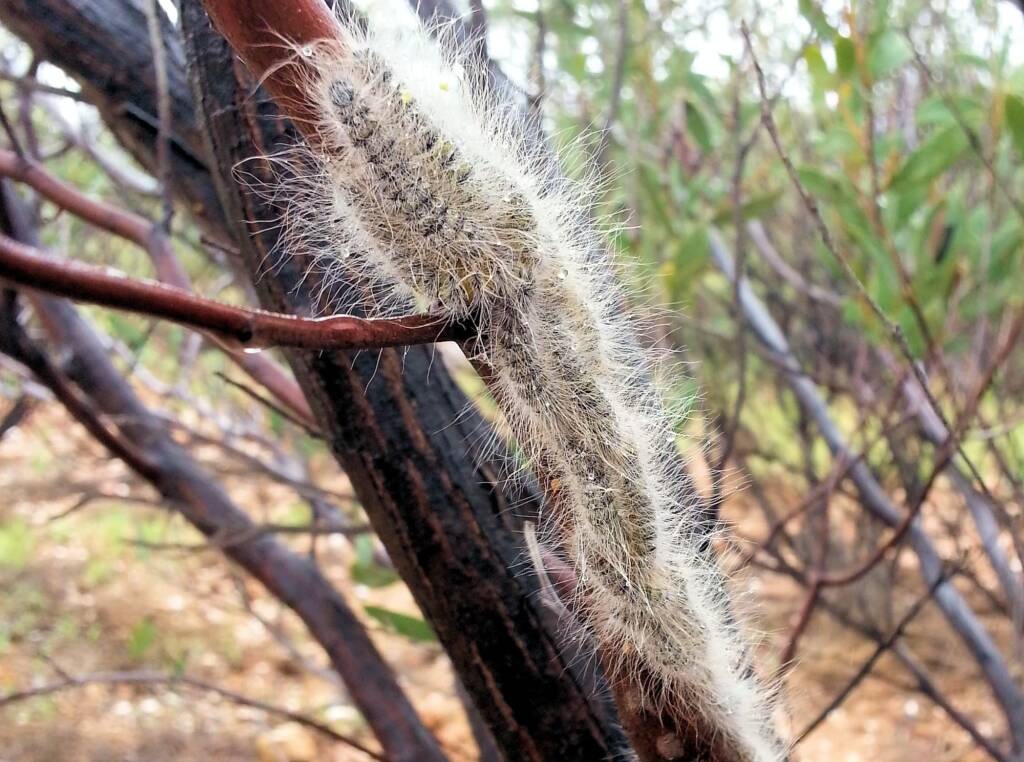
The Processionary Caterpillars (Ochrogaster lunifer) are found across Australia. There is thought to be more then one species that are called Processionary Caterpillars (being very similar they are yet to be identified), as well as other genus/species that are hairy and processionary in behaviour, such as the Pine Processionary (Thaumetopoea pityocampa).
An interesting observation of the Processionary Caterpillars (Ochrogaster lunifer) is that In coastal areas the bags of caterpillars are located at the base of a food tree, whilst inland areas the bags of caterpillars are located up higher in the branches. This suggest there are at least two distinct species, possibly more, of the processionary caterpillars, but this has yet to be proven.
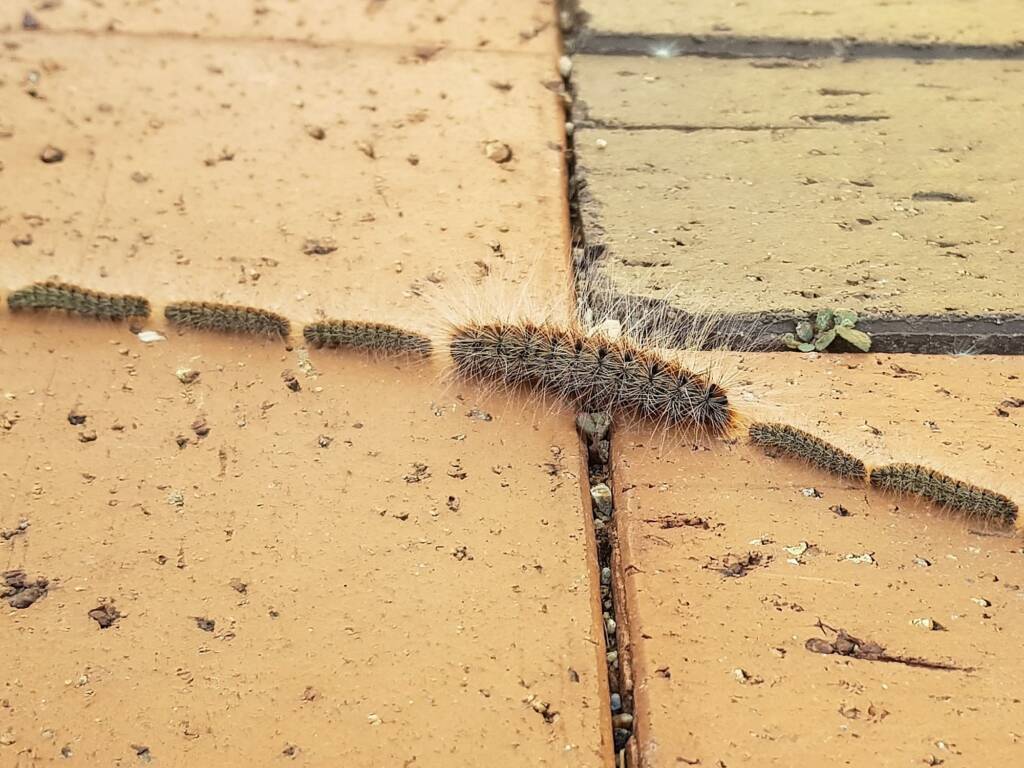
For the Arrernte people in Alice Springs / Central Australia, a long line of Processionary Caterpillars (four metres and more), indicates that there is a cold and hard (frosty) winter on the way.1
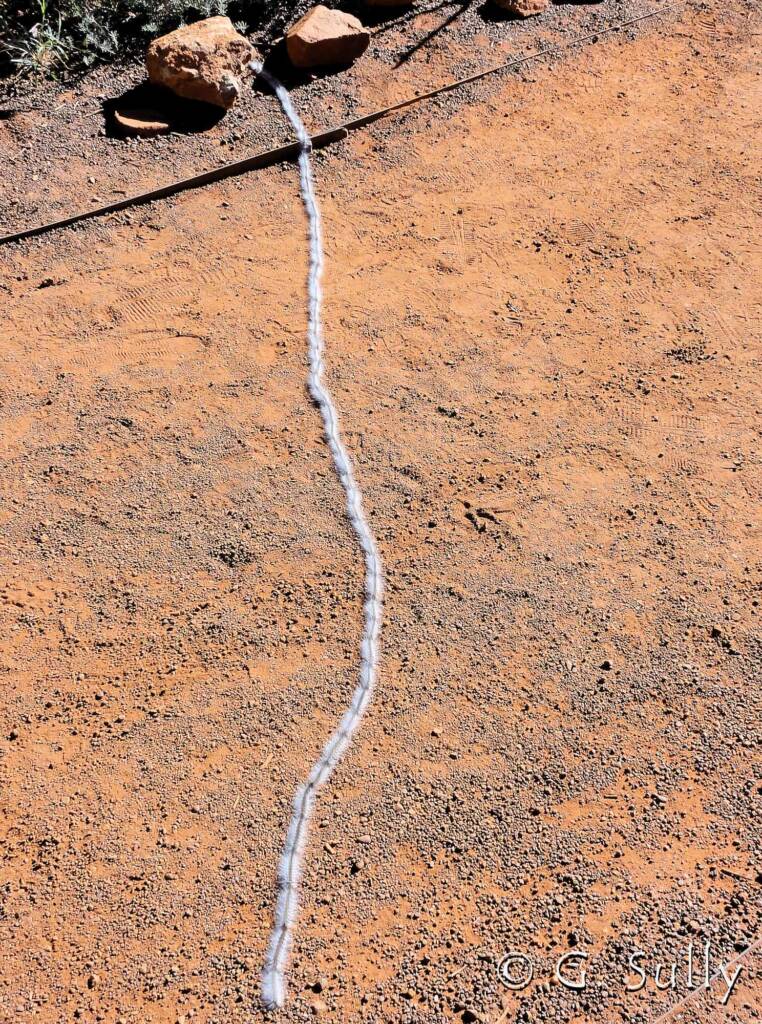
- Scientific classification
- Kingdom: Animalia
- Phylum: Arthropoda
- Subphylum: Hexapoda
- Class: Insecta
- Subclass: Pterygota
- Order: Lepidoptera
- Superfamily: Noctuoidea
- Family: Notodontidae
- Subfamily: Thaumetopoeinae
- Genus: Ochrogaster
- Species: Ochrogaster lunifer
Footnote & References
- Procession of caterpillars sign of frosty time ahead by Donna Coutts, Kids News
Bag-shelter Moth (Ochrogaster lunifer)Adult Bag-shelter Moth Processionary Caterpillars
MothsMoths Index Aedia arctipennis Anthela guenei (Four-Spot Anthelid Moth) Australian Striped Hawk Moth Bag-shelter Moth (Ochrogaster lunifer) Case Moths (Variety of Cocoons) Coenotes eremophilae Convolvulus Hawk Moth Emperor Gum Moth (Opodiphthera eucalypti) Four-spotted Cup Moth Green-blotched Moth (Cosmodes elegans) Leaf Case Moth Mistletoe Emperor Moth Mistletoe Moth (Comocrus behri) Plume Moth Rattlepod Moth (Utetheisa) Ribbed Case Moth Sameodes cancellalis Saunders’ Case Moth (Metura elongatus) White-spotted Owl-Moth
